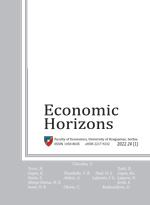THE PERFORMANCE OF DYNAMIC AND STATIC INVESTMENT STRATEGIES IN PENSION FUNDS
Stevan Lukovic
Faculty of Economics, University of Kragujevac, Kragujevac, The Republic of Serbia
The retirement savings process for the members of a pension fund involves regular contribution payments made by a member and/or his employer, and the investment earnings generated by following an investment strategy. After the Global Financial Crisis, the aspect of value preservation has become particularly important to members of a pension fund, thus affecting the selection of an investment strategy. In face of increasing fluctuations on the financial market, static lifecycle strategies have become an unsatisfactory solution for members of a pension fund given the absence of a response to shocks on the financial market. In the paper, a comparative analysis of the performance of dynamic and static lifecycle strategies is carried out using bootstrap resampling in order to simulate investment returns and VaR indicators so as to assess the risk of an adverse financial outcome at retirement. The results of the analysis indicate the fact that dynamic lifecycle strategies generate more favorable financial results than static lifecycle strategies do, with a slightly increased likelihood of generating extremely unfavorable outcomes.
Keywords: dynamic investment strategies, static investment strategies, pension funds, lifecycle strategy, bootstrap resampling
JEL Classification: G11, G17, J26, J32




